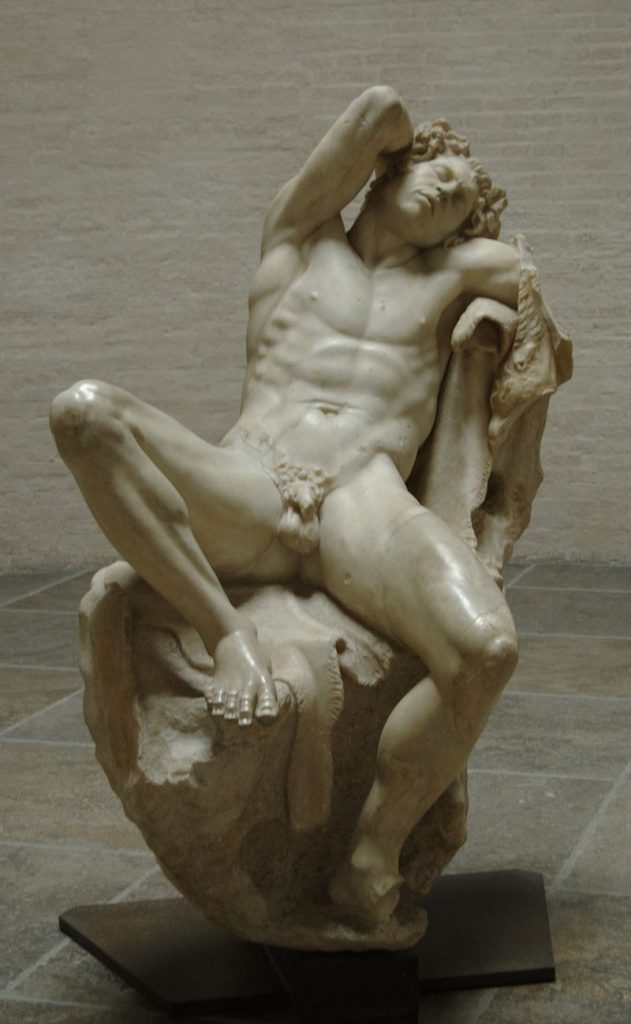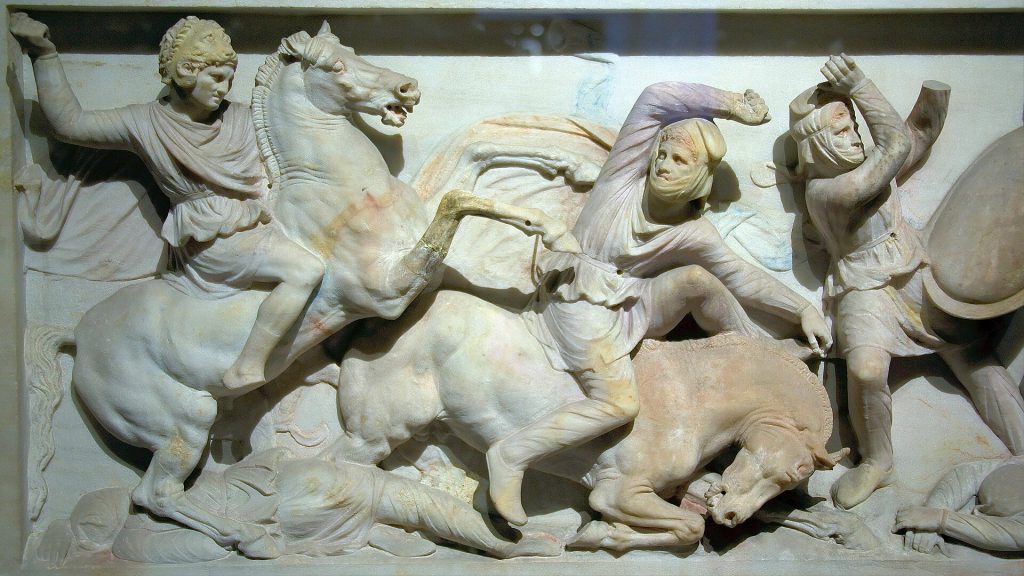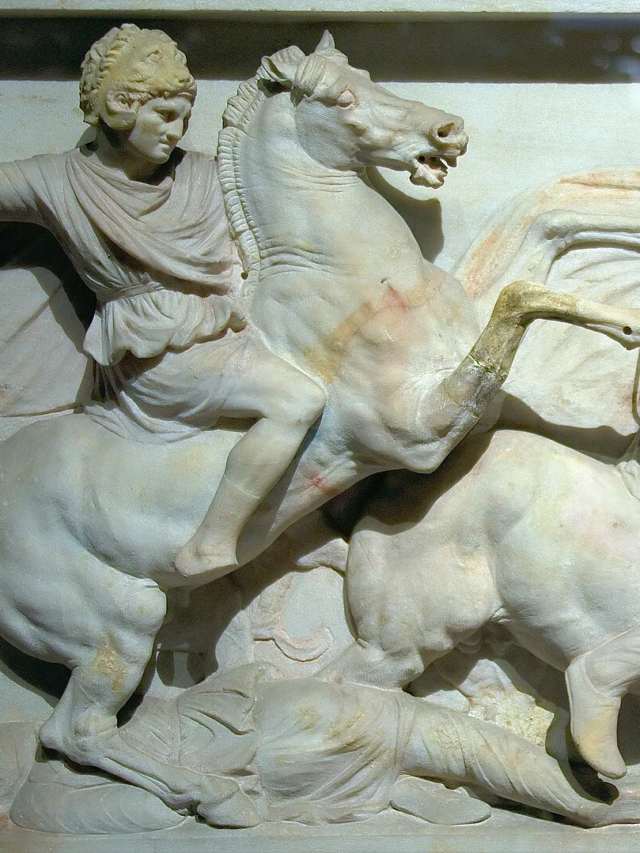The term “Hellenistic art” describes the artwork created between the fall of Alexander the Great in 323 BCE and the founding of the Roman Empire in the first century BCE. Greek culture and influence expanded throughout the Eastern Mediterranean and beyond throughout this time, and Greek artistic traditions were blended with those of other countries.
‘As a result of Alexander’s conquest of the Persian Empire, much wealth flowed into Macedonia.’ A large-scale construction programme was initiated soon after Alexander’s death, reinforcing city walls, rebuilding the royal palaces of Pella and Aegae (Vergina), and filling the countryside with monumental tombs. The archaeological record has shown that a lot of construction took place during the rule of Cassander, who succeeded Alexander’s half-brother Philip I11 Arrhidaios to the throne of Macedon and was responsible for twenty years of prosperity and stability from 316 to 297 BC, write 0. Palagia in an edited book, Brill’s Companion to Ancient Macedon.
Characteristics of Hellenistic Art

From the idealised depictions of the Classical Greek period, Hellenistic art diverged. Artists started concentrating on expressing their subjects’ unique personalities and feelings. Realistic facial expressions and anatomical details increased, and sculptures frequently portrayed older or more commonplace people. Greek and Roman sculptures were characterised by dynamic stances and exaggerated gestures that evoked a sense of passion and energy. Motion-captured figures captured intense or dramatic moments in time.
The conventional concentration on gods and idealised athletes was not the only thing found in Hellenistic art. Artists began to depict various topics, such as familiar people, women, kids, and the elderly. While mythological themes remained popular, they were frequently portrayed more narratively and emotionally. Even while marble remained a prominent material for sculptures, Hellenistic artists also experimented with using terracotta and bronze. Terracotta was typically used for more miniature, less expensive artworks, but bronze allowed for more detailed detailing and dynamic stances.
New forms and structures emerged in Hellenistic architecture; Corinthian columns were used more frequently, and colossal buildings like the Nike of Samothrace and the Altar of Pergamon showed a mastery of dramatic composition and grandeur. The emphasis on emotional expression in Hellenistic art was high. The composition, body language, and facial emotions in paintings and sculptures demonstrate this. Artists wanted their audience to feel something viscerally.
The pervasive impact of Greek culture marked the Hellenistic period as it interacted with diverse indigenous traditions in areas that Alexander the Great conquered. The variety of subjects and styles in Hellenistic art indicates this mingling of cultures.
Impact of Hellenistic art

The artistic traditions of antiquity were significantly impacted by Hellenistic art, which shaped the art of its era and the evolution of later times. The dissemination of Greek civilization throughout Alexander the Great’s enormous realm was intimately associated with Hellenistic art. Greek art affected many locations, resulting in a fusion of Greek and local artistic traditions, as its artistic styles, techniques, and topics spread throughout Asia and beyond.
The idealised forms of Classical Greek art were abandoned in favour of reality and individualism in Hellenistic art; this change in artistic direction had a long-lasting effect on Western art, helping to emphasise the intricacies of individuality, emotion, and human expression more. The variety of subjects portrayed in artwork expanded during the Hellenistic era; a more comprehensive range of characters, including ordinary people, women, children, and the elderly, were painted by Hellenistic artists than by earlier Greek artists, who frequently concentrated on gods, heroes, and idealised figures. This openness had an impact on later artistic interpretations.
During the Hellenistic era, the portrayal of emotions in artwork was highly valued. Later artistic styles heavily incorporated this emphasis on emotional expression, with artists aiming to elicit powerful reactions from spectators by portraying intense emotions and dramatic situations. Hellenistic architecture introduced new forms and structures; some examples are the magnificent monuments, the development of dynamic and dramatic architectural compositions, and the usage of Corinthian columns. These developments impacted later architectural movements, such as the Roman Empire.
The Hellenistic world was characterized by blending Greek culture with the diverse traditions of conquered regions. This cultural fusion is evident in Hellenistic art, and it set a precedent for artistic syncretism in later periods. The interchange of artistic ideas and styles contributed to the richness and diversity of art in the ancient world. Hellenistic art greatly influenced Roman art and architecture. As the Roman Republic and later the Roman Empire absorbed Greek territories, they also absorbed Greek artistic traditions. Roman artists and architects incorporated Hellenistic elements into their work, contributing to the development of Roman art.
Hellenistic Culture

Greek influence expanded over a vast empire, including parts of Europe, Asia, and Africa. Greek customs were combined with other nations to create a vibrant cultural and artistic synthesis. Greek concepts, language, and customs were combined with those of conquered civilizations to create Hellenistic culture. A varied and multicultural society was the outcome of this syncretism. Numerous city-states and royal courts embraced Hellenistic culture as the Greek world grew. Cities like Pergamon, Alexandria, and Antioch developed as scholarship, trade, and artistic patronage hubs.
Hellenistic Art In India
Ancient Indian art and culture were greatly influenced by Hellenistic art, especially in the years after Alexander the Great’s conquests, and the art flourished throughout the Indian subcontinent. The contact that took place in the latter part of the 4th and the beginning of the 3rd century BCE had a long-lasting effect on the artistic traditions of the area. The Greco-Buddhist art that flourished northwest of the Indian subcontinent, especially in territories that were part of the Greco-Bactrian and Indo-Greek kingdoms, is the most notable example of the influence of Hellenistic art in India. A great example of blending Greek and Indian creative components is the Gandhara School of Art, which takes its name from the Gandhara region in modern-day Pakistan and Afghanistan. This school saw great success.
Archaic Greek Sculpture
The sculpture that originated in ancient Greece during the Archaic period—roughly from the eighth to the early fifth century BCE—is called archaic Greek sculpture. During this time, before the Classical Period, unique aesthetic conventions emerged and set the stage for subsequent Greek sculpture. Ancient Greek sculptors frequently produced statues of youthful men and women, known as kouroi (korai). These statues portrayed idealised young people and were usually freestanding and used for votive gifts and tomb markers.
The complex cultural tapestry woven throughout Alexander the Great’s enormous kingdom is demonstrated by Hellenistic art. This creative era, which lasted from the fall of the Roman Empire to Alexander’s death in 323 BCE, captured a time of rapid cultural change, artistic creativity, and syncretism.
The diverse legacy of Hellenistic art has profoundly impacted the course of Western artistic traditions. Realistic, independent, and emotional expression emerged as distinctive characteristics, signifying a break from the idealised forms of Classical Greek art. The “Winged Victory of Samothrace” and “Laocoön and His Sons” sculptures are two examples of Hellenistic sculptures that brilliantly and evocatively depict the human condition.






